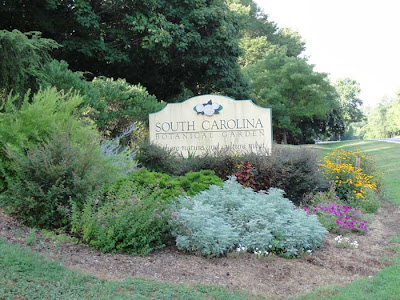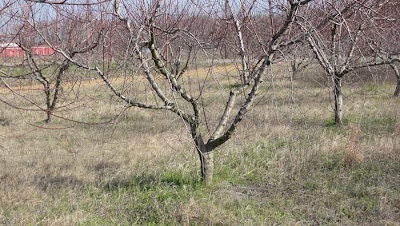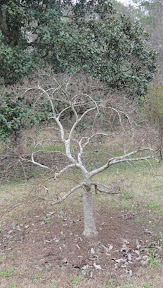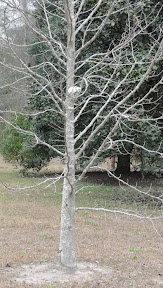 |
| South Carolina Botanical Garden entrance - Clemson University |
“There's something in these hills . . . the ability of an institution
through the unending dedication and greatness of its people — its
administration, its faculty, its staff, its students and its alumni — to impart
to all it touches a respect, an admiration, an affection that stand firm in
disquieting times when things around it give impressions of coming unglued… Yes,
there's something in these hills where the Blue Ridge yawns its greatness.”
—
Joe Sherman, Clemson University, Class of 1934, Director of Public and Alumni Relations
Sherman’s words, written in 1969,
are as relevant today as they were then. The story of
Clemson University is, to
state the obvious, an inspiring one. The people and the place have made it so.
The place, at the foot of the Blue
Ridge Mountains, was the
site of Fort Rutledge, built in 1776. The fort was the
idea of General Andrew Williamson who
was in command of the colonial forces in the area during the Revolutionary War.
Williamson requested Governor John Rutledge for money to erect a defensive fort
against British forces and allied Cherokees. His request was granted, probably
because he promised to name the fort in honor of the governor.
The property was later owned by the
John E. Calhoun family and descendants, who worked it as the
Fort Hill Plantation. In 1888, Thomas G. Clemson, the widower of
Calhoun heiress, Anna Maria Calhoun, honored his wife’s desires and willed the
property for the establishment of an agricultural college. The college opened
in 1893 as an all-male military academy, later became co-educational, and
eventually attained university status.
Part of Clemson’s story includes
that of the South Carolina Botanical Garden. The garden began in 1958 as a
camellia preserve adjacent to the Calhoun plantation, and has since grown to
include over 295 acres of landscaped gardens and woodlands. With so much to see, I recommend that you geta map online and print it off, or from the Hanson Discovery Center. A paved drive leads to it from the main
entrance. While you’re there, you should
take in the Campbell Geology Museum, which is landscaped to resemble a western mine. The Discovery Center and Geology Museum were closed the day I visited,
but I thoroughly enjoyed walking around, viewing mineral displays, cacti and succulents in arid settings, manicured landscapes
and container gardens.
The main parking lot on Pearman
Boulevard provides a fine overlook of the Heritage Gardens. The Heritage Garden
introduces visitors to the history of Clemson, principally its years as a
military school, through a series of bronze reliefs and plaques within the
Golden Tigers and Class of ’42 Cadet Life Garden. The complex includes
trellised walkways, an amphitheater, and the colorful Caboose Garden (Class of ’39),
dominated by a restored train caboose.
From there, visitors can meander
through woodland gardens and landscaped open spaces via a system of winding
trails. Informative signs mark the sections and give insight into the
purposeful designs. Most of the gardens seem to have been partially funded by
patrons, whose names they bear.
Near the entrance, the Hopkins Wildlife Habitat Garden displays plants and planting combinations that one
might use, even in a home landscape, to provide food, water and shelter for
wildlife. It’s a great place for children to watch for little
creatures.
The Flower Display Garden is
certain to provide ideas for the home landscape. Carefully planned combinations
of annuals, perennials, shrubs and ornamental trees are delightful and
thought-provoking.
The nearby Miller Dwarf Conifer Collection displays lovely cultivars that could easily be included in suburban
gardens. Similarly, the adjacent Van Blaricom Xeriscape Garden demonstrates
within its attractive panorama how to
xeriscape, i.e. to landscape with plants, such as sedum,
that have low moisture requirements.
The South Carolina Botanical Garden
began as a camellia collection near what is now the football field. It was
moved to its present location on the banks of a duck pond. The Camellia Trail
is best visited from November through April when they are in bloom.
Unfortunately, I visited the Camellia Trail in summer, but the scenery was pleasant.
From the camellia collection, the
trail winds downhill to cross the Earthen Bridge. The bridge serves not only to
cross a small stream by the duck pond, but as a functional sculpture.
Within the botanical garden is the
historic Hanover House, and the Heirloom Vegetable Garden behind it. The
Hanover House (circa 1716) was originally situated in Berkeley County, SC and
was the home of French Huguenot, Paul de St. Julien. Threatened with being
inundated by the waters of Lake Moultrie in 1914, it was moved to the Clemson
campus. Ironically, much of Clemson’s campus was also threatened later with
inundation by the creation of Lake Hartwell by the U.S. Army Corps of
Engineers.
Education is at the heart of the
South Carolina Botanical Garden, and it certainly extends to young children.
Several gardens located in close proximity meet their needs: the Peter Rabbit Garden, Butterfly Garden, Ethnobotany Garden, Food for Thought Garden, and
Pollinator Border. I loved them all, and admired the creative minds of
designers who were able even to make a large propane tank look like it
belonged.
The trail system continues through
woodlands, over small streams, and to nature-based sculptures such as The Crucible.
One might come upon it without a map in hand and think it’s a historic relic,
perhaps a source of water for Cherokee people or early settlers who lived
nearby. In a sense it is a historic relic, but not so old. The Crucible was installed in
1995 by sculptor Herb Parker.
Natural Dialogue is another
nature-based sculpture that you should visit. Stop to think.
My wanderings eventually brought me
to the Hunt Cabin (circa 1826). It originally stood near Seneca, SC, but, when
threatened with demolition, was moved to the Clemson campus in 1935. The
setting is appropriate, and seems original. You’ll get a glimpse of 19
th
century life, and read about the hospitality that was shown there, even to
scoundrels like
William T. Sherman (not related to Joe, I hope).
Returning to my vehicle,
I strolled through the Charles and Betty Cruickshank Hosta Garden, taking
lots of pictures as I went. Hostas are
among the most popular perennials in American gardens. The Cruickshank Hosta Garden is an official American Hosta Society Display Garden, so you’ll see
plenty of them. Keep your camera clicking as you examine some you might want
for your own perennial border.
These highlights are but a few of the many you can enjoy in the South
Carolina Botanical Garden. Though there were plenty of visitors exploring the
grounds, I appreciated the much needed sense of serenity that we often need “in
disquieting times” when the world seems like it’s “coming unglued.” Yes, “there’s
something in these hills” for you.










